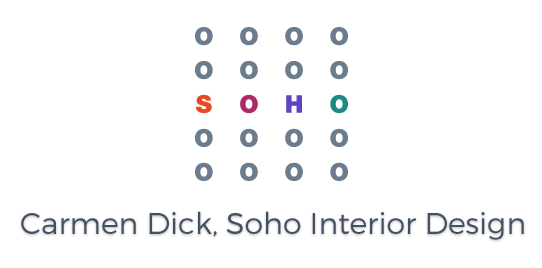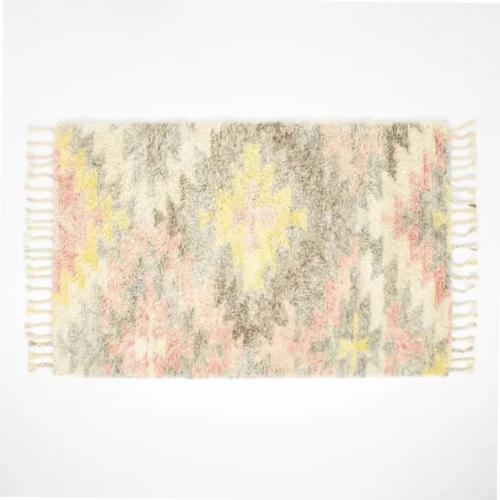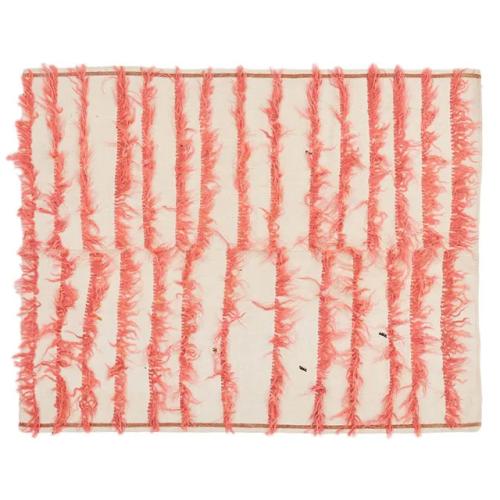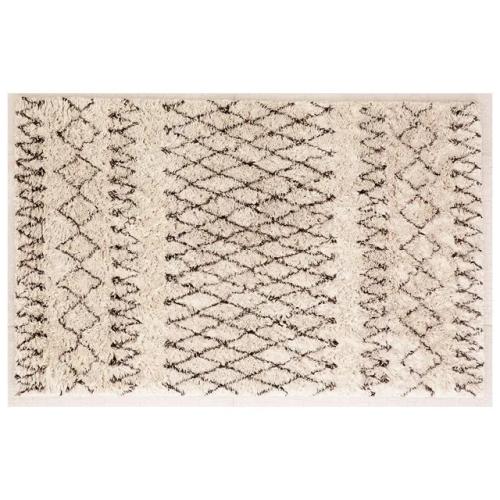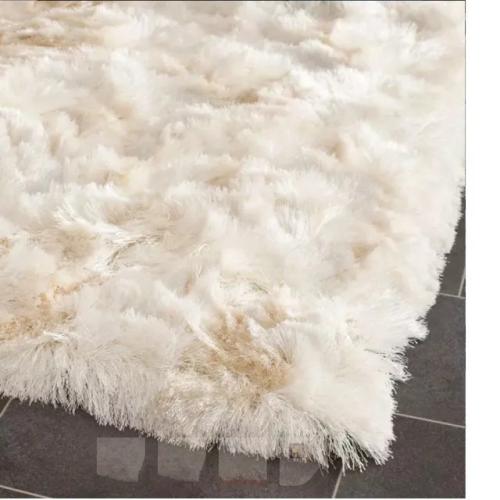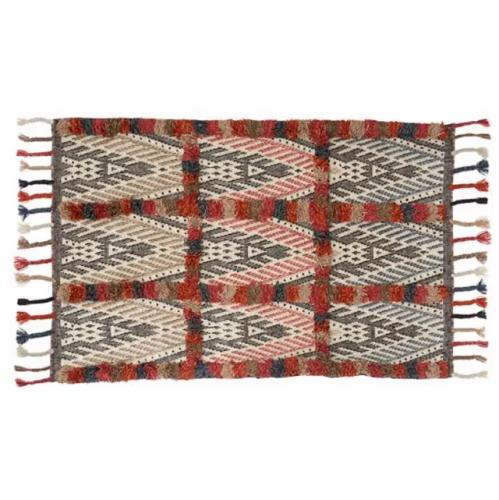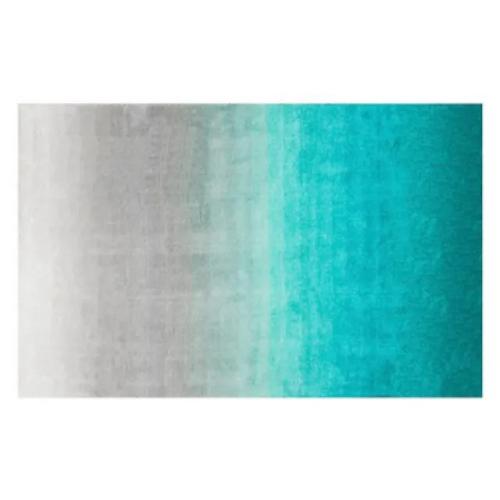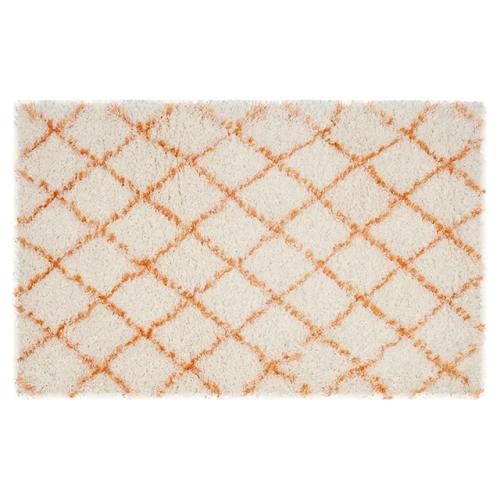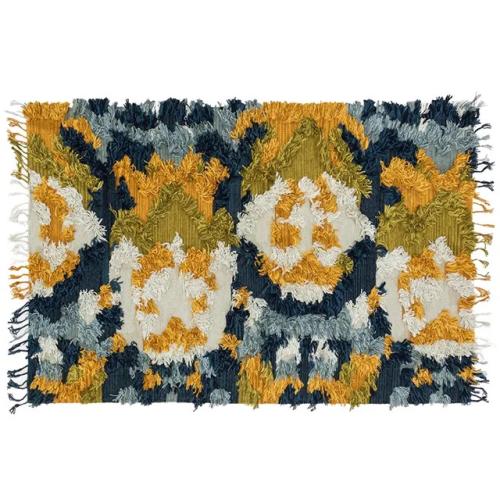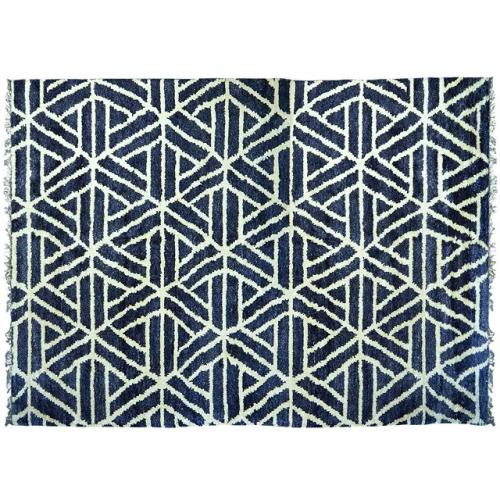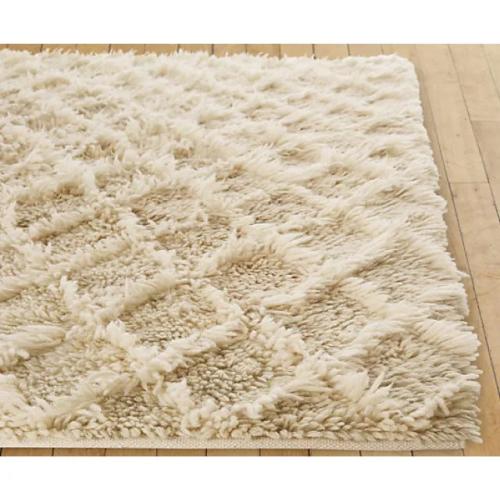Your living room (or any main room) typically isn’t complete without a rug. But with so many options out there, finding the best one can be like trying to solve a puzzle.
The right area rug will pull a room together and is something you can keep for years.

For a primary room to feel pulled together, most designers will tell you, it needs a rug.
But area rugs can be expensive. And because a large-scale item like that is going to have a big effect on the way a room looks and feels, choosing one can be intimidating. The right rug may live in your home for decades. The wrong rug will serve as a daily reminder of the money you wasted — and the money you’ll have to spend if you want to replace it.
And getting it wrong is all too easy, given the range of materials, colors, patterns, and sizes available. Finding the ideal rug, observed the New York-based interior designer Celerie Kemble, is a “complicated puzzle.”
To help you solve that puzzle, Ms. Kemble and other designers and rug manufacturers offer good advice.
Use One or a Few
There is no rule that says you have to limit yourself to a single area rug in the living room. Designers often use multiple area rugs in larger rooms to define different areas. So how do you know whether one or a few is best?

A boldly patterned rug can serve as the defining feature of a living area.
Smaller spaces, and living rooms enclosed by walls and doorways, usually benefit from a single large rug.
“I’m often dealing with apartments where the goal is to expand the sense of usable space in a living room,” Ms. Kemble said. In those cases, “I usually want to use one rug, and make it as big as I possibly can.”
Sprawling, open-concept spaces, like lofts, are more likely to benefit from multiple rugs, which help ground disparate groupings of furniture and can be used to separate a living area from a dining or media area, in the absence of walls.
Can’t Decide? Then Layer Them
Another option is to layer rugs on top of each other, with a single large, plain rug on the bottom to cover most of the floor, and smaller decorative rugs on top to anchor different seating areas.
“One of my favorite tricks is to use a very big sisal rug, which is relatively inexpensive, and then layer softer, plusher kilims or dhurries on top at the seating areas,” Ms. Kemble said. “It tells everybody, by the enormity of the sisal, that you’re all at the same party.”

For a living room in Wilton, Conn., Carrier and Company layered an antique Persian rug over a larger sisal rug.
Determine the Size
It is important to work around a room’s obstructions when planning a rug purchase.
“We always start with the practical and then get to the decorative, while considering the architecture and mechanics” of a home, said Jesse Carrier, a principal of Carrier and Company, a New York interior design firm. “Are there doorways and door swings to consider? Is there any floor grille for HVAC that you don’t want to cover? Is there a fireplace where you have to deal with a hearth?”
After taking these details into account, consider circulation around the seating areas.
“There’s nothing worse than being forced to walk on the perimeter of a rug,” Ms. Kemble said, with one foot on and one foot off.
Choose a size that either completely covers the walkway or leaves the floor exposed where people need to pass by. Then decide how far beyond the furniture the rug should extend. A common way to size a rug is to ensure that it reaches underneath all four feet of all the furniture.
Or you could use a smaller rug that runs under the front feet of the sofas and chairs, and stops there. Just make sure that smaller objects at the rug’s edges, like end tables and floor lamps, are completely on or off the rug, Mr. Carrier said: “You don’t want unbalanced, rocking end tables every time you put something down.”
What about small rugs that float in the center of a room, untethered by sofa and chair legs? Many experts advise against them.
“Small rugs look a little bit lost and unfinished,” said Susanna Joicey-Cecil, the marketing director for the Rug Company, in London. “It can feel like a postage stamp, which is not so pleasing for the eye.”

All the living room furniture in a home in Cartagena, Colombia, designed by Richard Mishaan, sits on a large wool Sandeep rug from Patterson Flynn Martin.
Choose a Patterned or Plain Area Rug
A boldly patterned rug can serve as the defining feature of a living area, but because it has so much impact, it’s a choice that requires courage. Deciding whether to go with a graphic statement rug or something more understated comes down to personal preference, as well as your overall design vision and where your home is.
“In the city, oftentimes clients will want to invest in an antique carpet from an auction or one of the great rug vendors as a showpiece,” Mr. Carrier said. But in country homes and beach houses, “we’ll often do some sort of sisal, sea-grass or coir carpet, because it’s a little more informal and rustic.”
If you decide to shop for a patterned rug, there are endless choices available, from free-form contemporary designs to more traditional ones. But if you’d rather keep it simple, there are plenty of opportunities to introduce pattern at a smaller scale.

Celerie Kemble designed the Catalyst wool-and-linen rug for Merida, and used it as a feature element in a home on the Upper East Side of Manhattan.
“For more laid-back, Zen environments, there are fantastically beautiful sisals with patterns in them, like herringbones and subtle stripes,” said Richard Mishaan, a New York-based interior designer. “To dress them up a bit, add a fabulous binding in leather or suede. It doesn’t increase the price enormously, but it’s very chic and beautiful.”
Pick a Material
Rugs come in many materials, including plant-based fibers like cotton, linen, sisal, jute and allo; downy, natural fibers like wool, silk, and mohair; and synthetic materials like nylon and solution-dyed acrylic. There are also nonwoven rugs made from stitched-together materials like cowhide.
Each offers a different look and feel, with varying characteristics related to how well the materials wear and how easy they are to clean. They also range widely in price.
Rugs made from plant-based materials are often among the most affordable and offer an easy, casual look. But different fibers have different durability: Cotton and linen, for instance, age fairly quickly, while sisal and allo can take more abuse.
“We’ve had some disasters with linen,” Mr. Carrier said, “which is very, very beautiful” — at least when it’s new. But because it is easily damaged by wear and spills, he added, “we’ve had to replace a lot of linen rugs in our time, and now avoid them like the plague.”
Allo, on the other hand, is “very cleanable and doesn’t retain stains,” he said.

A custom-designed wool rug anchors a seating area in a modernist house in New Canaan, Conn., with interiors by Carrier and Company.
One of the most popular materials is wool, which can offer a range of looks depending on how it’s handled, from thin, flat weaves to hairy, hand-knotted shags. Wool tends to be more expensive than most plant-based materials, but it is stain resistant, softer underfoot, and durable enough to last for centuries.
“Wool has lanolin in it, which makes it a very cleanable, stain-resistant fiber,” said Bethany Hopf, a sales manager at the House of Tai Ping carpet company, in New York. “When you spill, it sits on top for a little while before it will actually absorb,” which gives you time for cleanup.
Even when a spill soaks in, she said, “we have a lot of success getting stains out.”
The same cannot be said for silk, which is generally more expensive and delicate, but has a softer feel and a lustrous sheen. Some upscale rugs are made entirely from silk, while others combine wool and silk to create various effects.
In patterned rugs, “very often we have a wool background and then highlight the motif with silk, because it helps it pop,” said Ms. Joicey-Cecil, of the Rug Company. “You can have lots of fun playing with those two textures, because the silk has a lot of sheen to it.”

A Brink Ivory wool-and-silk rug by Kelly Wearstler for the Rug Company extends under the front feet of a sofa, while smaller objects, like the end table and floor lamp, sit on the bare wood floor for stability.
But Ms. Kemble cautioned that mixed-fiber rugs can be difficult to clean: “Silk can’t take water, but wool needs water to be cleaned. So when you have silk-and-wool mixes, it creates hard-to-sort problems once there’s a spill.”
Consider Indoor-Outdoor Area Rug Options
If spills and stains from children and pets are a concern, it may be a good idea to choose an indoor-outdoor area rug made from a synthetic material like solution-dyed acrylic, polypropylene or PET (polyethylene terephthalate), which are now often so soft and appealing that they can be hard to distinguish from indoor-only materials.

The Akimbo I wool-and-silk rug from Edward Fields takes center stage in a small sunroom.
“They’re impenetrable: You can’t stain them; you can’t ruin them,” said Mr. Carrier, who replaced a wool rug with a nylon one in his own home when his children were younger, then switched to sisal when they grew up. “In certain applications, that’s the way to go.”
Don’t Forget the Rug Pad
It’s tempting to bring a rug home and put it down immediately, but there’s a step you shouldn’t skip: putting a nonslip rug pad underneath.
Cut the pad to a size slightly smaller than the carpet. A general rule is that it should be trimmed about an inch shorter than the rug on all sides, to provide maximum grip while preventing a visible change in level where the rug transitions from pad to floor.
Rug pads offer a touch of additional cushioning, Ms. Hopf said. But their real utility is more “about keeping it in place and preserving the life of the carpet,” she said.
In other words, it ensures that your new rug won’t slide like a banana peel
Here are my Pro-Tips on how to choose the perfect area rug:
- Measure your space. …
- Pick the right style. …
- Consider the material. …
- Contemplate foot traffic. …
- Choose between solid colors or patterns. …
- Layer complementary rugs. …
- Invest in a rug pad.
Here’s another tip: If at all possible select the rug first then design around it.
Whew. There’s a lot to take in here, and I know it can be overwhelming. If you’d like me to help you choose the right area rug for your environment, please reach out to me – I’m always available for a helpful consultation, and we can take it from there.
You can choose a contact method right below this blog post. And feel free to give me a call anytime at (407) 743-2399, and we can explore some exciting living room decor ideas together. You can also email me at: carmen@sohointeriordesign.com and you can also click this link to message me via my website.
![]()
![]()
![]()
![]()
![]()
![]()
![]()
![]()
![]()
![]()
![]()
![]()
![]()
